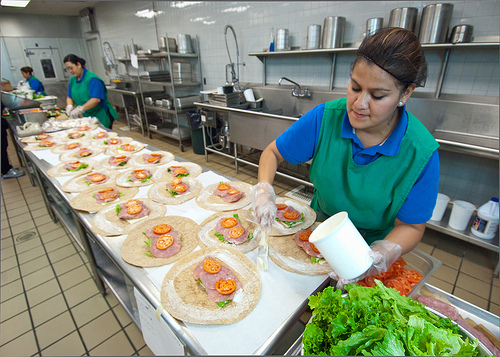The Tisch Food Center opposes these rollbacks on the basis that the 2012 updates to school nutrition standards reflect sound science, support children’s health, and are consistent with the 2015-2020 Dietary Guidelines for Americans and the National Academies of Science, Engineering, and Medicine (formerly, Institute of Medicine) 2009 report School Meals: Building Blocks for Healthy Children.
How can you join us in opposing these rollbacks?
- Submit this sample full or brief comment, prepared by NANA, to the USDA docket by January 29, 2018;
- Activate your networks using the Center for Science in the Public Interest's (CSPI) online alert;
- Sign on to this group letter; and
- Share your engagement via Twitter and/or Facebook (see sample posts from CSPI below).

(Photo credit: USDA)
@SecretarySonny @USDA announced plans to allow too much salt in school meals and fewer whole grains: bad for kids’ health and undermines the progress that schools are making toward healthier meals. http://bit.ly/saveschoolfoods
9 out of 10 kids eat too much salt, which is dangerous for their health. Yet @SecretarySonny @USDA announced plans to maintain dangerously high levels of salt in school meals. http://bit.ly/saveschoolfoods
@SecretarySonny @USDA is allowing schools to provide fewer whole grains. If all schools in Alabama, Idaho, and Montana can serve whole grains to students, schools in other states can too. http://bit.ly/saveschoolfoods
The Trump Administration announced plans to roll back school nutrition. They’d allow dangerously high levels of salt in school meals even though 9 out of 10 kids eat too much salt, putting their health at risk. USDA should be doubling down on helping schools continue to improve school lunches, not blocking progress. http://bit.ly/saveschoolfoods